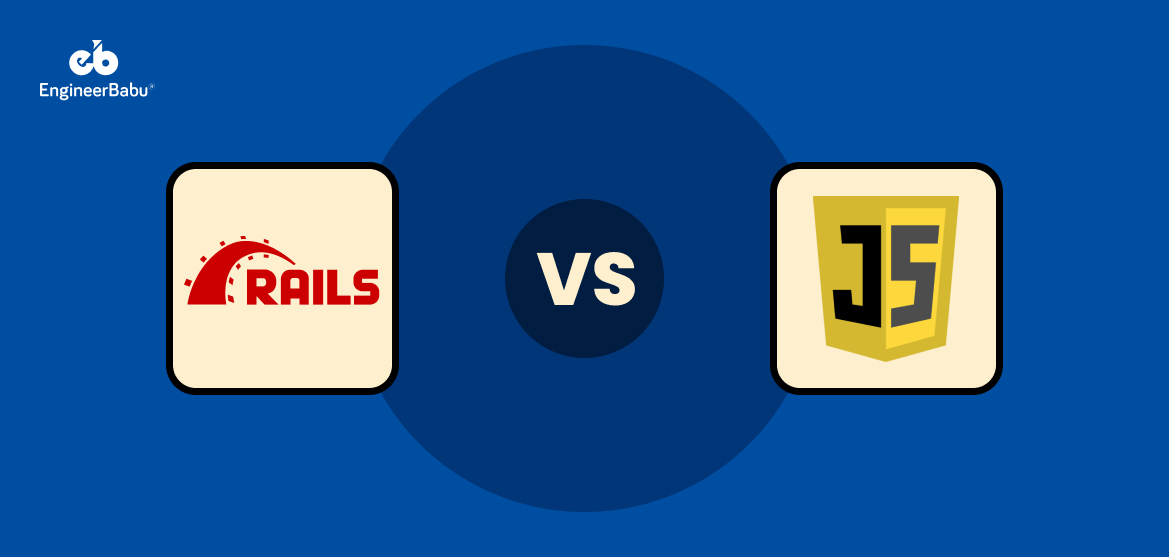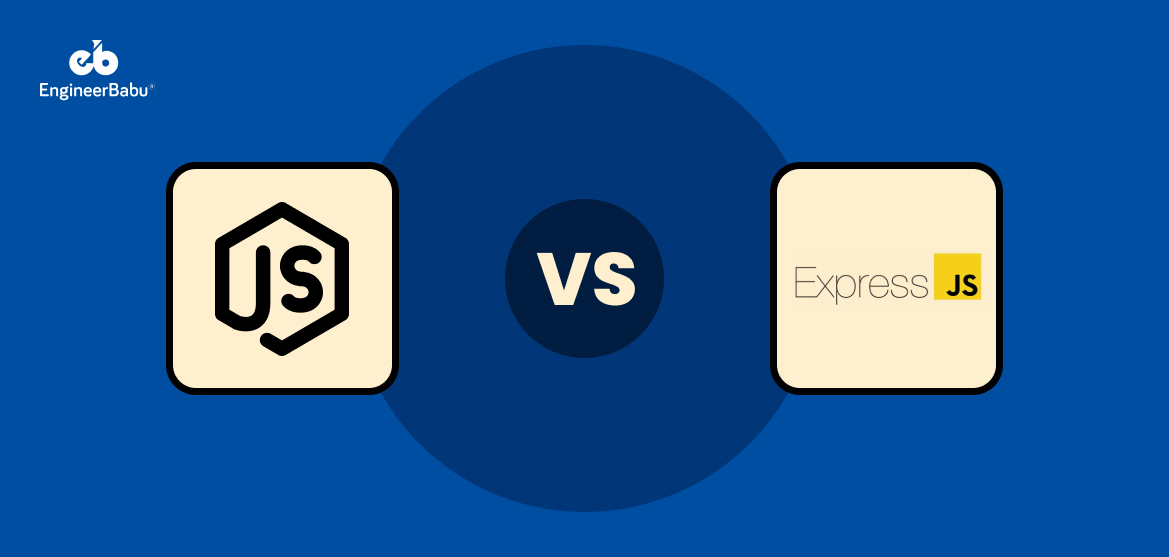Deciding between Ruby on Rails vs JavaScript is not just about choosing a language or framework. It’s about aligning your tech stack with your business goals, timelines, and team capabilities.
- On one side. Ruby on Rails is known for fast development, clean architecture, and is used by global names like GitHub and Shopify.
- JavaScript, meanwhile, is used by nearly 62.3% of developers worldwide and continues to dominate both front-end and back-end development.
Thus, these numbers reflect that teams are investing their time and budgets in both languages.
So, if you’re building a product this year, your decision could impact how quickly you launch, how your team collaborates, and how easily you scale. In this guide, we’ll explore Ruby on Rails vs JavaScript, compare them side by side, and help you choose what fits best for your next web project.
Understanding Ruby on Rails vs JavaScript
Before we dive into comparisons, it’s important to understand what each technology brings to the table.
A fair evaluation begins with knowing how they’re built, what they’re meant to do, and where they typically perform best. This sets the foundation for a clear view of Ruby on Rails vs JavaScript.
What is Ruby on Rails?
Ruby on Rails is a backend web development framework built on the Ruby language. It follows the Model-View-Controller (MVC) pattern and focuses on clean, structured code through a Convention-over-Configuration approach.
Furthermore, developers often choose Rails for its productivity, fast prototyping, and the large collection of pre-built tools known as “gems.” In most debates, Rails stands out for backend simplicity and rapid development cycles.
What is JavaScript?
JavaScript is a powerful, flexible programming language used to build everything from simple websites to complex web applications. Originally designed for the browser, it now powers the backend too through Node.js.
With thousands of frameworks, libraries, and tools, JavaScript offers full-stack capability that suits many use cases. So, when comparing Ruby on Rails vs JavaScript, JavaScript often takes the lead for teams looking to use one language across the entire stack.
Pros & Cons of Ruby on Rails and JavaScript
When evaluating a tech stack, features alone don’t tell the full story. You need to look at trade-offs, development pace, team experience, and long-term flexibility. That’s where the real weight of Ruby on Rails vs JavaScript decisions shows up.
Advantages of Ruby on Rails
- Faster Prototyping
Firstly, Rails is built for speed. It helps teams launch MVPs or new features faster using built-in conventions and a rich set of reusable components. - Developer Productivity
Secondly, clean code patterns and minimal boilerplate allow developers to stay focused. This is a key reason why many startups lean toward Ruby on Rails Development services in their early stages. - Built-In Security Features
Unlike some frameworks where security setup takes extra work, Rails offers defaults that protect against major threats right out of the box. It’s one of the consistent strengths in the Ruby on Rails vs JavaScript debate when it comes to backend safety.
Disadvantages of Ruby on Rails
- Performance Bottlenecks
Rails performs well for standard use cases, but high-concurrency or data-heavy systems may need extra optimization. Thus, for high-throughput systems, other stacks could be a better fit. - Smaller Talent Pool
Compared to JavaScript, Rails has fewer active developers worldwide. That can increase hiring time or limit flexibility if you’re growing a team quickly.
Advantages of JavaScript
- Full-Stack Flexibility
JavaScript can handle both front-end and back-end through frameworks like React and Node.js. This full-stack coverage is a major edge when comparing Ruby on Rails vs JavaScript for long-term scalability. - High Performance with Node.js
Its non-blocking event loop enables smooth performance under heavy load. This makes Java development services ideal for chat apps, streaming platforms, and other real-time use cases. - Massive Ecosystem
Lastly, there are thousands of ready-to-use packages, libraries, and dev tools. Teams can move faster and build smarter without starting from scratch.
Disadvantages of JavaScript
- Development Complexity
Too many choices can slow down progress. Without a clear structure, teams risk building inconsistent codebases, especially in larger applications. - Security Needs More Attention
JavaScript doesn’t include built-in safeguards like Rails. Developers often depend on third-party tools or frameworks to maintain security, which is a key difference in the Ruby on Rails vs JavaScript conversation.
When Should You Choose Ruby on Rails
If you’re working with limited time or fixed resources, hire Ruby on Rails developers without thinking further. It can help you move faster without sacrificing code quality. It’s especially strong when launching MVPs, content-based platforms, or admin-heavy tools with repeatable CRUD functions.
Additionally, in most Ruby on Rails vs JavaScript comparisons, Rails is seen as the go-to for getting a product off the ground quickly. The built-in tools, predictable architecture, and strong defaults allow developers to spend more time building features and less time setting up configurations.
Additionally, security is another reason teams lean toward Rails. You get protection from common vulnerabilities without adding third-party solutions. As a result, various startups and SME’s hire Ruby on Rails developers for their development projects.
So, if time-to-market, safety, and developer speed are part of your priority list, Rails might be your best pick in the Ruby on Rails vs JavaScript discussion. Furthermore, if you are still confused, check out the top mistakes you need to avoid when hiring Ruby on Rails developers.
When Should You Choose JavaScript
JavaScript shines when you’re building complex interfaces, real-time systems, or applications that need high scalability. Single-page applications (SPAs), chat platforms, and data-rich dashboards are all areas where JavaScript offers more flexibility and smoother performance.
Moreover, in today’s full-stack environment, Ruby on Rails vs JavaScript debates often highlight JavaScript’s ability to unify front-end and back-end development. With tools like React, Vue, and Node.js, your entire team can work with one language across the stack.
It’s also easier to find and hire Java developers, thanks to the massive global community. If your product needs fast interactions, dynamic content, or rapid scaling under pressure, JavaScript tends to have the edge in the Ruby on Rails vs JavaScript comparison.
Ruby on Rails vs JavaScript: Side-by-Side Comparison
To make the decision clearer, here’s a direct look at how Ruby on Rails vs JavaScript compare across key factors that matter in real-world development.
| Criteria | Ruby on Rails | JavaScript |
| Type | Backend web framework built on Ruby. | Programming language for front-end and back-end (Node.js). |
| Development Speed | Known for fast MVP development. Convention-over-configuration speeds up builds. | Setup may take longer. Speed improves with experience and framework selection. |
| Performance & Scalability | Performs well with caching and optimisation. May need tuning for high-concurrency apps. | Node.js handles concurrency efficiently. Ideal for real-time and scalable apps. |
| Security | Comes with default security protections like CSRF, SQL injection prevention. | Needs manual configuration and best practices to match Rails’ level of security. |
| Ecosystem & Talent Pool | Mature but smaller community. Strong developer support for backend needs. | Massive global community. Easier to hire and onboard across full-stack roles. |
Real-World Use Cases & Examples
Understanding how companies use these technologies in production helps bring clarity to the Ruby on Rails vs JavaScript comparison. Each has a track record of powering successful products, but the context of their use is very different.
Where Ruby on Rails Is Commonly Used
Rails works well for platforms that rely on structured data models, user management, and fast iteration. Companies like GitHub, Shopify, Basecamp, and Twitch have used Rails to launch scalable products with clean architecture and rapid development cycles.
Moreover, it also suits internal tools, admin panels, and content-based platforms where convention and speed matter more than flexibility. In many cases, startups choose Rails to build MVPs quickly and validate ideas before switching to a microservices approach.
Furthermore, many companies choose to use React JS with Ruby on Rails. Thus, reinforcing Ruby’s position as a strong contender in any modern tech stack comparison.
Where JavaScript Dominates
JavaScript, especially when paired with Node.js, is preferred for real-time applications like Slack, Netflix, and PayPal. Its non-blocking architecture helps handle thousands of simultaneous requests, which makes it perfect for chat apps, streaming platforms, and live dashboards.
Furthermore, SPAs (Single Page Applications), PWAs, and systems that demand interactive front-ends also lean heavily on JavaScript frameworks like React, Vue, or Angular.
Also, in real-world product builds, the Ruby on Rails vs JavaScript choice often reflects the structure and complexity of the project, not just the tech trend. While JavaScript rules the interactive and event-driven space, Rails remains a solid choice for backends that require order, speed, and stability.
Conclusion: Ruby on Rails vs JavaScript
There’s no universal winner in the Ruby on Rails vs JavaScript debate, only the right fit for your specific product, team, and timeline. Each technology has its edge.
Ruby on Rails accelerates development and keeps backend systems clean, while JavaScript gives you the flexibility to build rich, dynamic, and scalable full-stack experiences.
The smartest choice isn’t based on hype. It’s based on clarity, knowing what you need today and what your product will demand six months from now.
If you’re leaning toward Rails but want experienced guidance to get it right the first time, we’ve got your back. EngineerBabu’s vetted Ruby on Rails developers have built high-performing products for startups and enterprises across the globe.
FAQs about Ruby on Rails vs JavaScript
How do I hire the top Ruby on Rails website developers?
Start by looking for developers with experience in scalable backend development, database management, and RESTful API integration. Prioritize those who have built or contributed to real-world web applications using Rails, and ask for code samples or GitHub activity.
Moreover, hiring through a trusted tech partner ensures faster onboarding, code quality, and alignment with your project goals. At EngineerBabu, we match you with top Ruby on Rails talent tailored to your needs, whether you’re building a startup MVP or a large-scale product.
Is Ruby on Rails in demand?
Yes, Ruby on Rails remains in strong demand for projects that need fast development, clean architecture, and strong built-in security. Startups and mid-sized companies continue to use Rails for internal tools, admin dashboards, and content-driven platforms.
Is Ruby on Rails dead?
No. While newer frameworks enter the spotlight, Rails has quietly evolved. With support for modern APIs, Webpacker, and Hotwire, Rails is more powerful and efficient than ever. It’s still the preferred choice for teams who value convention, simplicity, and stability in backend development. In fact, in many Ruby on Rails vs JavaScript comparisons, Rails still wins when speed and developer productivity are top priorities.
Are Ruby and JavaScript similar?
They serve different purposes. Ruby is an object-oriented language primarily used on the backend through Rails. JavaScript, on the other hand, powers both front-end and back-end development (thanks to Node.js). While both can be used for web development, their syntax, ecosystems, and runtime behaviours are quite different.
Which is faster, Ruby or Java?
Java generally offers better raw performance and is preferred for high-load systems or enterprise-scale software. Ruby focuses more on developer speed and clean code than runtime speed. For most web applications, Ruby on Rails delivers excellent performance with proper caching and infrastructure support.
Is Ruby on Rails or JavaScript better for beginners?
It depends on your learning goals. Ruby on Rails offers a smooth introduction to backend development. JavaScript introduces more flexibility and is essential for front-end roles.
However, its broad ecosystem and many frameworks can be overwhelming at first. In the Ruby on Rails vs JavaScript discussion, Rails is often seen as more beginner-friendly for structured web apps.
Can Ruby on Rails work with JavaScript?
Yes, and in most modern applications, they do. Rails handles backend logic, while JavaScript frameworks like React, Vue, or even plain JS handle dynamic front-end interactions.
Combining the two is common in projects where performance, user experience, and development speed all matter. It’s another area where the Ruby on Rails vs JavaScript debate ends in collaboration, not competition.




